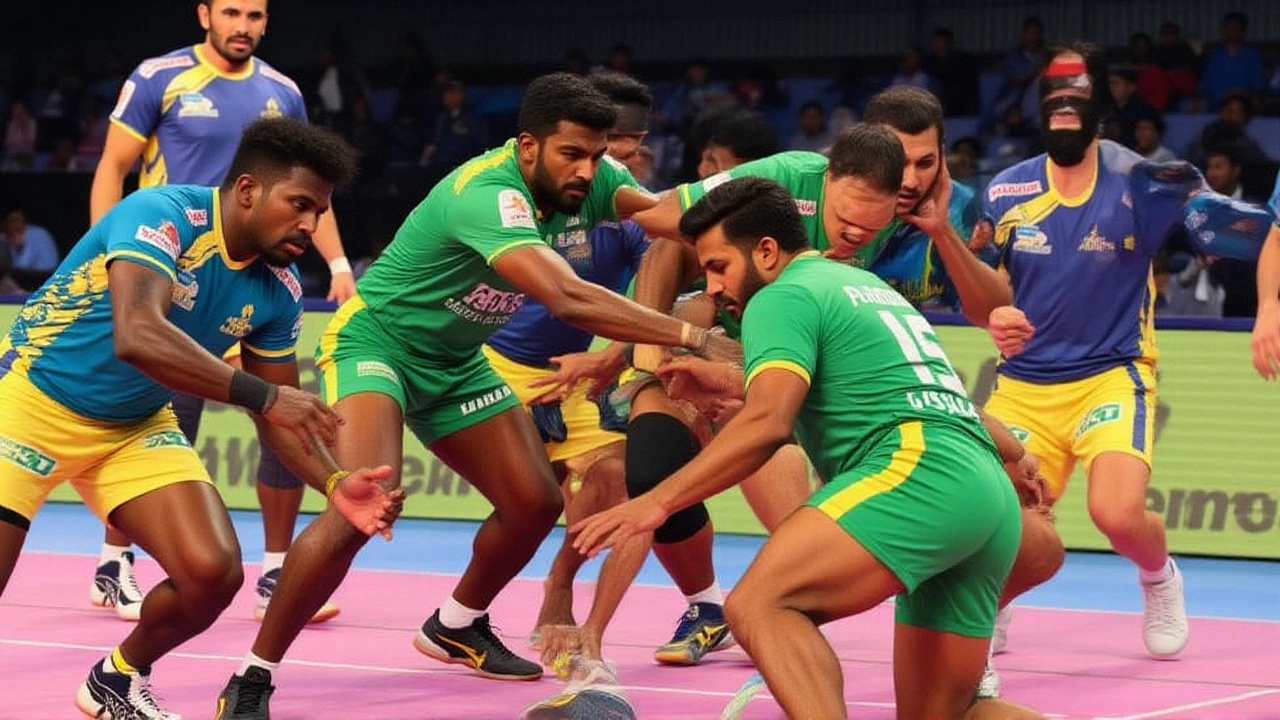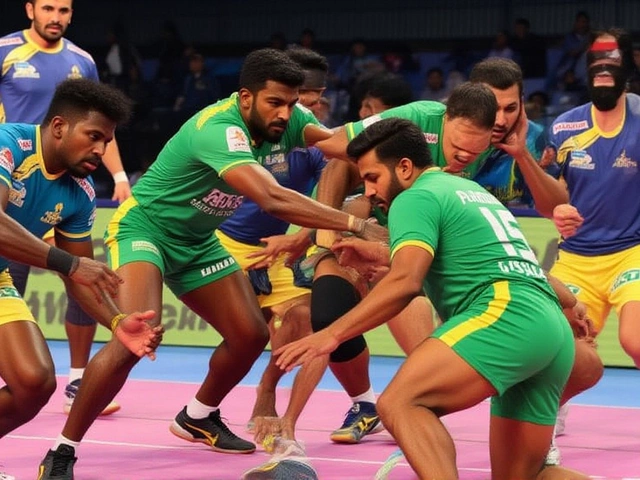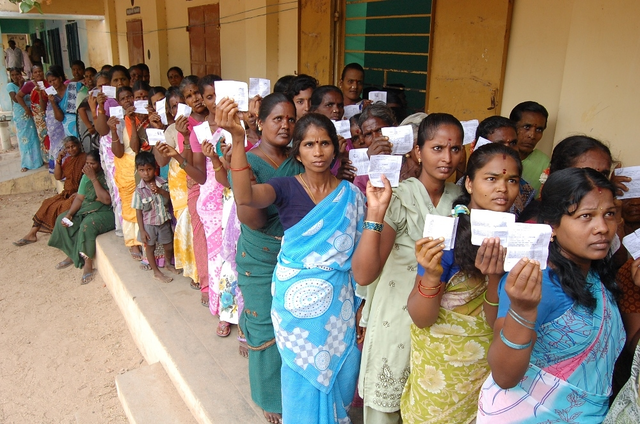When Ajay Thakur, captain of Tamil Thalaivas led his side to a 42‑26 triumph over the three‑time defending champions, the Patna Pirates, the opening night of the Vivo Pro Kabaddi League 2018-19Tamil Nadu felt like a wake‑up call for the league.
It was Sunday, 7 October 2018, 20:00 IST, and the buzzing crowd at the NMC Indoor Stadium in Tamil Nadu watched a story unfold that would set the tone for a season of surprises. The Thalaivas, only in their second year after a dismal debut, moved the needle with a 16‑point margin, while the Pirates’ title‑defence trembled under the weight of a relentless raiding display.
Season Opener: Thalaivas' Stunning Victory
Here’s the thing: the Thalaivas’ line‑up was a blend of home‑grown talent and overseas imports, but Ajay Thakur’s 14 raid points stole the show. Beside him, raider Surjeet Singh added a tidy 7 points, and the defensive unit, anchored by Manjeet Chhillar, racked up 28 tackle points.
Patna’s lone bright spots were star raider Pardeep Narwal, who managed just a fraction of his usual haul, and defender Manjeet who held his ground. The final whistle sparked celebrations across Tamil Nadu – the league was only making its second stop in the state, and the locals cheered a home win like a festival.
Stat sheet from that night reads like a textbook example of a dominant side: 42 points, 13 super tackles, and a 70 % tackle success rate for the Thalaivas. Patna, by contrast, scraped together just 26 points, and their conversion rate lingered below 40 %.
The Turnaround: Patna Pirates' Revenge
Fast forward to 21 November 2018, a Wednesday showdown in Patna’s home arena. This time the tables turned – the Patna Pirates delivered a 45‑31 win, riding a wave of "Super 10s" from Pardeep Narwal and another raider, Deepak (full name not confirmed). The Pirates lifted their fourth consecutive victory, a stark contrast to the opener loss.
Why the swing? Coach Trevor Morgan (not a primary entity but worth a mention) tweaked the raiding order, giving Narwal freedom to attack the opposition’s weak left corner. The defense tightened up, with Vikas Kale and Vikas Jaglan combining for ten successful tackles in the second half.
Fans noted a subtle shift in Patna’s chemistry – the team seemed hungrier, maybe bruised by the October defeat. It paid off. Pardeep’s 12 raid points, including two super raids, swung momentum. The Pirates’ bench also contributed, with substitute Vijay Kumar adding 4 tackle points that capped a tight defensive stand.
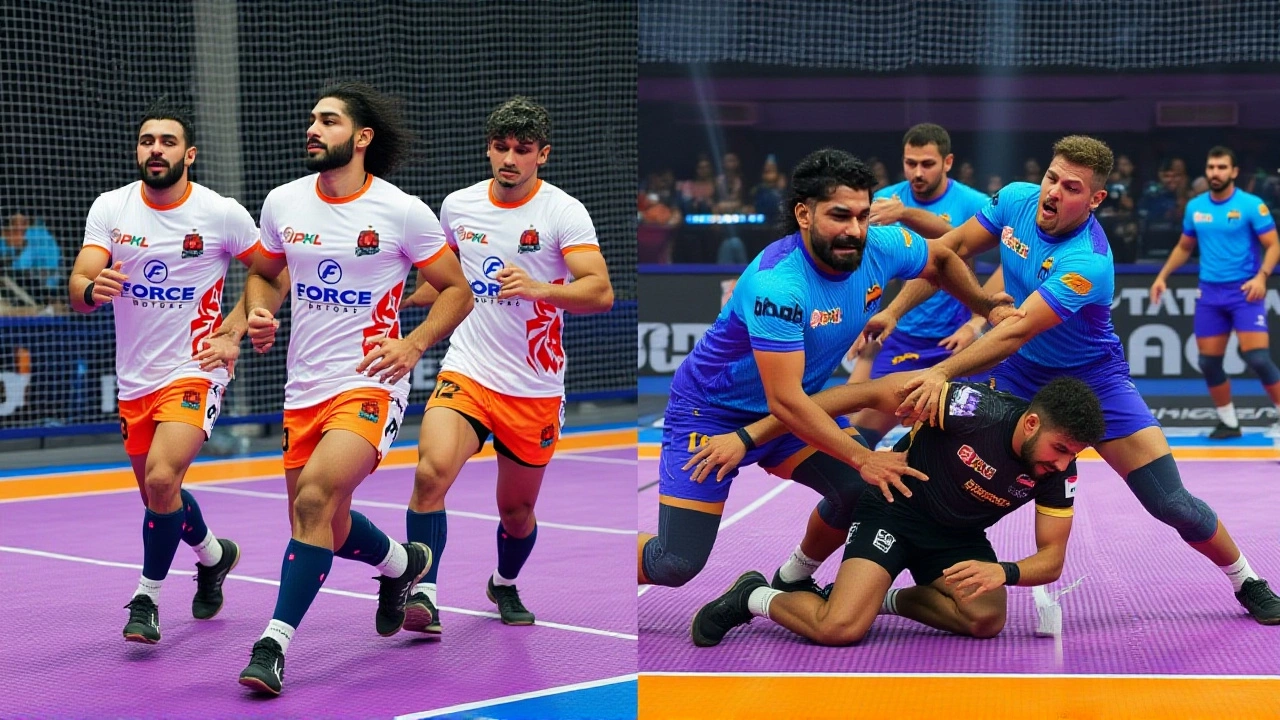
A Nail‑Biting Draw: The 35‑35 Standoff
March isn’t relevant here – the third meeting came late in the season, on 30 December 2018, at the Kanteerava Indoor Stadium in Bengaluru. The match ended in a 35‑35 dead heat, the kind of finish that leaves both fans and analysts reaching for the replay button.
Both sides fought back from early deficits. The Thalaivas, trailing 12‑22 at halftime, rallied with a burst from Ajay Thakur (another 9 points) and a crucial super tackle by Manjeet Chhillar. Patna responded with a late surge, Narwal hitting his second Super 10 of the night, but the gap never widened enough to avoid a tie.
The draw mattered more than the points: it kept the Thalaivas alive in the race for a playoff spot and forced the Pirates to settle for a lower seed despite their earlier winning streak. Analysts called it “a testament to the league’s parity”, an observation that rings true when you see three very different outcomes between the same opponents.
What the Series Says About PKL’s Competitiveness
Turns out, the three‑match saga between Tamil Thalaivas and Patna Pirates encapsulates what makes the Pro Kabaddi League so unpredictable. A newcomer can shock a champion, a champion can rebound, and a tie can feel as dramatic as a finals thriller.
Data backs the story. Across Season 6, the average winning margin was 7.8 points, but this pair produced a 16‑point swing, a 14‑point reversal, and a perfectly balanced tally. The league’s double‑round‑robin format, introduced by Mashal Sports, ensures each franchise faces every other twice, fostering both rivalry and redemption.
Beyond the numbers, the human element shines. Ajay Thakur’s leadership, Pardeep Narwal’s hunger for redemption, and the coaches’ tactical tweaks illustrate that Kabaddi isn’t just about raw power – it’s a chess match on a mat.
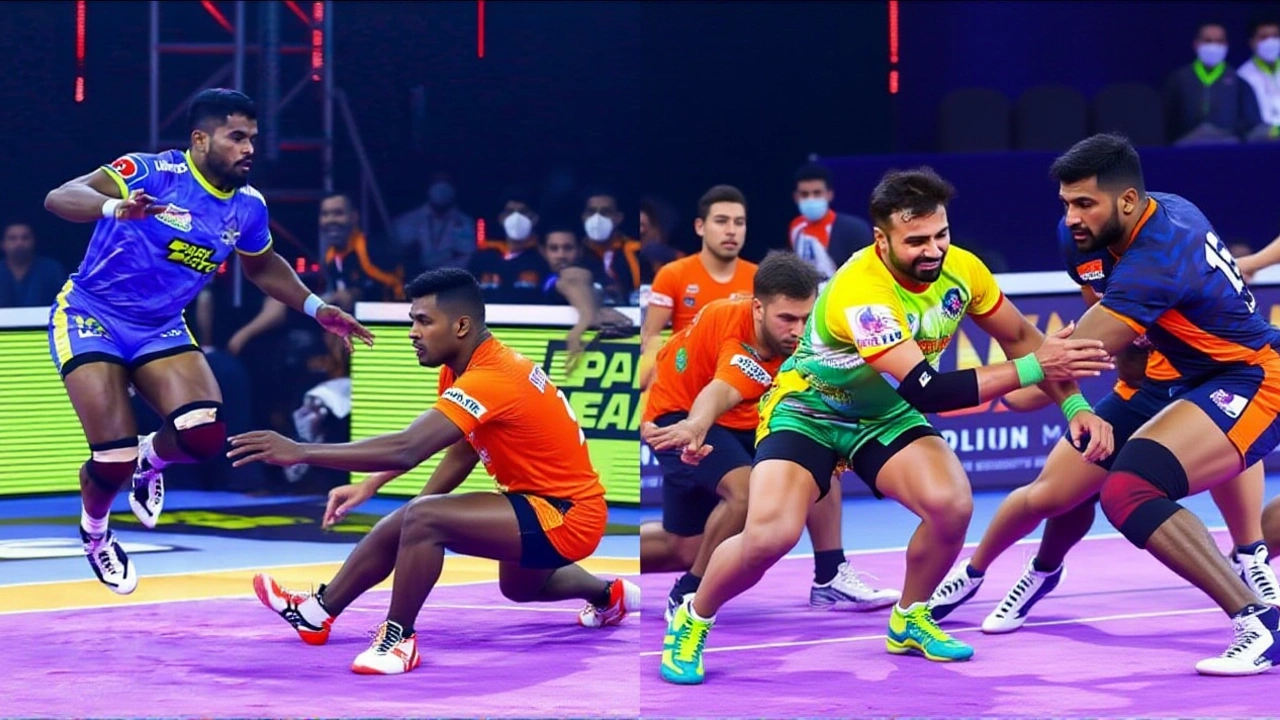
Looking Ahead: Teams’ Paths After the Showdowns
After the December draw, the Thalaivas fought through the remaining fixtures, edging out a playoff berth before falling to Bengaluru Bulls in the eliminator. The Pirates, despite their strong start, stumbled in the last few games and missed the finals altogether, a shocking end for a three‑time champion.
Both squads are already planning for Season 7. The Thalaivas hope to retain Ajay Thakur and add another foreign defender to shore up the backline. Patna Pirates, meanwhile, are rumored to be eyeing a fresh raiding combo to replace the ageing Narwal.
In short, the Tamil Thalaivas‑Patna Pirates saga isn’t just a footnote; it’s a micro‑cosm of a league that keeps fans on the edge of their seats, season after season.
- Opening match: Thalaivas 42‑26 Pirates (7 Oct 2018)
- Second clash: Pirates 45‑31 Thalaivas (21 Nov 2018)
- Third meeting: Thalaivas 35‑35 Pirates (30 Dec 2018)
- Season champion: Bengaluru Bulls
- Top scorer of the season: Pawan Sehrawat (271 points)
Frequently Asked Questions
How did Ajay Thakur’s performance influence the Thalaivas’ season?
Thakur’s 14 raid points in the opener set the tone, and his continued scoring (total 48 points) kept the Thalaivas competitive, ultimately helping them clinch a playoff spot despite early setbacks.
What was the significance of the 35‑35 tie for the Pirates?
The draw prevented Patna from securing a top‑four finish, forcing them into a lower playoff seed. It highlighted the league’s balance, as even a three‑time champion could be held to a stalemate.
Why did the Thalaivas beat the defending champions in the first match?
Playing at home in Tamil Nadu gave the Thalaivas a morale boost, and their defence, especially the 28 tackle points from the backline, smothered Patna’s raiders, limiting Narwal to just 6 points.
How did the league’s format affect these three encounters?
Season 6’s double‑round‑robin meant each team met twice, with a third clash possible in the playoffs. This schedule allowed both sides to adjust tactics and showcase the league’s inherent unpredictability.
What can fans expect from the next PKL season based on this rivalry?
The rivalry suggests that any team can win on any given day. Expect tighter contests, more strategic substitutions, and perhaps a renewed focus on defensive coaching across the league.
